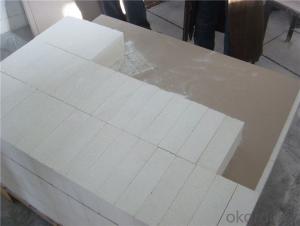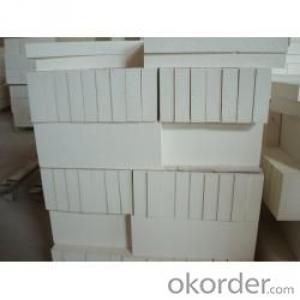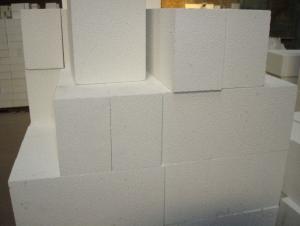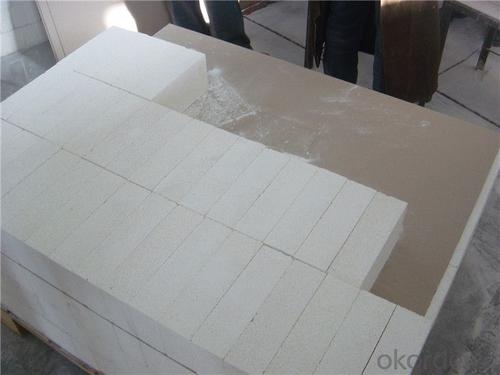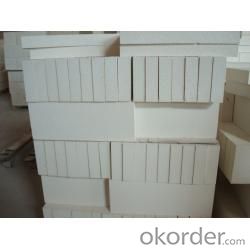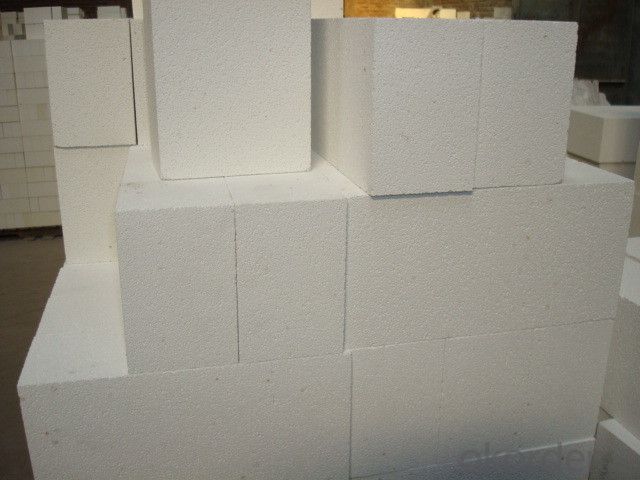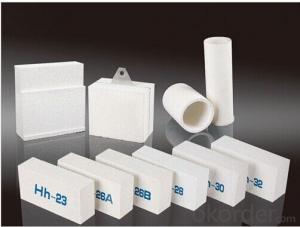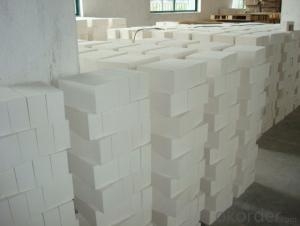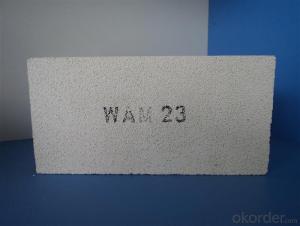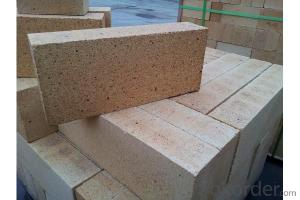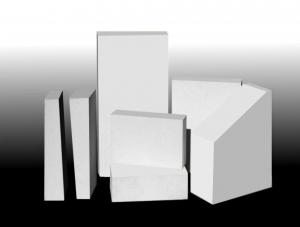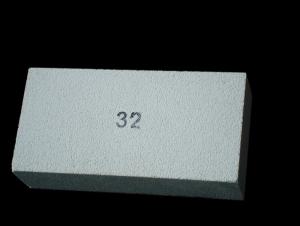Insulating Fire Brick for Hot Blast Stove Mullite Insulating Brick
- Loading Port:
- Shanghai
- Payment Terms:
- TT OR LC
- Min Order Qty:
- 1 m.t.
- Supply Capability:
- 1000 m.t./month
OKorder Service Pledge
OKorder Financial Service
You Might Also Like
CNBM conforms strictly to the requirements of ISO 9000 quality control system during the production. MSDS is also available if you want. The thermal insulation fire clay brick meet with the requirements of ASTM & JIS standards. So please stay cool with our quality.
Application
Insulating Fire Brick are used for the lining of converter, alternating current arc furnace, direct Current arc furnace and the ladle slag line, etc.
Insulating Fire Brick Technical index
Brand Quality | JM23 | JM26 | JM28 | JM30 | JM32 | |
Bulk Density (g/cm3) | 0.52 | 0.78 | 0.88 | 1.03 | 1.25 | |
1.2 | 1.6 | 2.1 | 2.5 | 3.5 | ||
Modulus of Rupture (Mpa) | 0.9 | 1.4 | 1.6 | 2.1 | 2.1 | |
-0.5 | 1400℃ -0.4 | 1510℃ -0.5 | 1620℃ -0.9 | 1730℃ -0.9 | ||
Thermal Expansion 1100℃(%) |
0.5 |
0.7 |
0.8 |
0.9 |
1.1 | |
Thermal conductivity(W/m.k)
| 400℃ | 0.14 | 0.27 | 0.32 | 0.41 | 0.49 |
600℃ | 0.16 | 0.29 | 0.34 | 0.43 | 0.50 | |
800℃ | 0.18 | 0.31 | 0.36 | 0.44 | 0.51 | |
1000℃ | 0.20 | 0.33 | 0.38 | 0.45 | 0.53 | |
Al2O3 | 37 | 58 | 67 | 73 | 77 | |
Fe2O3 | 0.7 | 0.7 | 0.6 | 0.5 | 0.4 | |
Equipment
1 unit of Ceramic Abrasive (SG Abrasive) pilot production line
2 units of Compact grain Abrasive pilot production lines
1 unit of high-end coated abrasives (abrasive cloth) production line
2 units of Boron Carbide production lines
3 large flexible crushing and sieving lines for grit production lines
2 units of 2000KVA furnaces for Boron Carbide fusion
6 units of 5000KVA-10000KVA dumping type electric arc furnaces for Brown Fused Alumina fusion
Company Advantage
(1)Long Insulating Fire Brick manufacture history: 25 years manufacturer
(2)Advanced equipment
(3)Diversification of production standards: ISO ANSI FEPA JIS ASTM
(4)Flexible payment: T/T L/C D/P D/A
(5)Professional marketing team and after-sale service
(6)Free sample
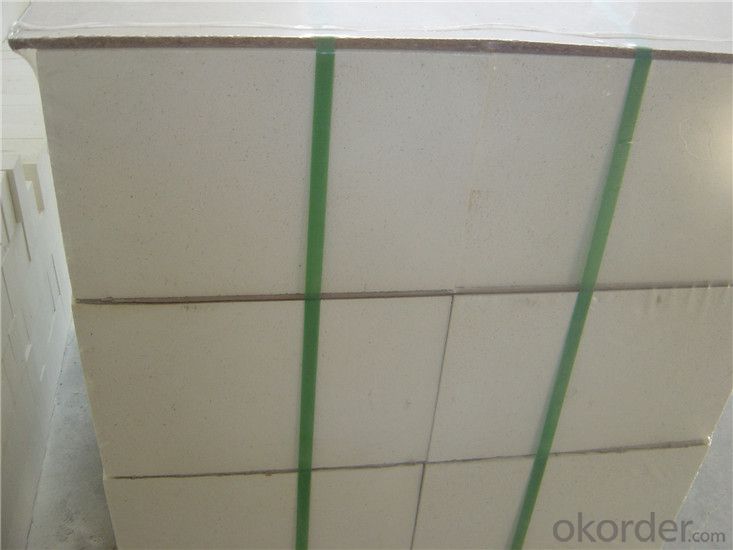
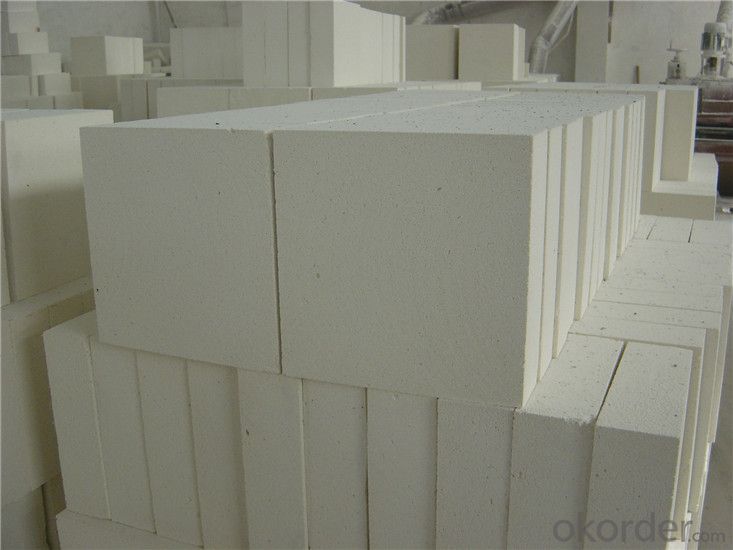
- Q: Can insulating fire bricks be used in the construction of rotary kilns?
- Yes, insulating fire bricks can be used in the construction of rotary kilns. These bricks are designed to provide thermal insulation and are commonly used in high-temperature applications such as kilns. Insulating fire bricks can help to reduce heat loss, increase energy efficiency, and ensure consistent and uniform temperature distribution within the rotary kiln.
- Q: Are insulating fire bricks suitable for insulation in boilers?
- Yes, insulating fire bricks are suitable for insulation in boilers. Insulating fire bricks are specially designed to withstand high temperatures and provide excellent thermal insulation, making them ideal for use in boilers. They help to reduce heat loss, improve energy efficiency, and enhance the overall performance of the boiler.
- Q: Can insulating fire bricks be cut or shaped using common tools?
- Yes, insulating fire bricks can be cut or shaped using common tools such as saws, chisels, or grinders.
- Q: Are insulating fire bricks resistant to fire damage?
- Yes, insulating fire bricks are specifically designed to be resistant to fire damage. They are made from special refractory materials that can withstand extremely high temperatures without deforming or losing their insulating properties. Insulating fire bricks have a high melting point and low thermal conductivity, which allows them to effectively insulate against heat transfer and protect against fire damage. They are commonly used in applications where high temperatures and fire exposure are expected, such as in furnaces, kilns, fireplaces, and industrial processes. Overall, insulating fire bricks are reliable and durable materials that provide excellent protection against fire damage.
- Q: Do insulating fire bricks require maintenance?
- Yes, insulating fire bricks do require maintenance. While they are known for their durability and ability to withstand high temperatures, regular maintenance is necessary to ensure their optimal performance and longevity. One key aspect of maintenance is periodic cleaning. Over time, insulating fire bricks can accumulate dust, soot, and other debris, which can affect their insulating properties. Therefore, it is recommended to clean the bricks regularly to remove any build-up. This can be done using a soft brush or a mild cleaning solution. Another important aspect of maintenance is checking for any cracks or damages. Inspecting the bricks for any signs of wear and tear is crucial to identify and address any issues before they worsen. Cracks or damages can compromise the bricks' insulation and stability, so they should be repaired or replaced as needed. Furthermore, it is important to monitor the condition of the mortar or refractory cement used to hold the insulating fire bricks together. Over time, the mortar can deteriorate due to exposure to heat and other elements. Regularly inspecting and repairing any damaged mortar helps to maintain the structural integrity of the fire bricks. In addition to these maintenance tasks, it is essential to follow the manufacturer's instructions and recommendations for the specific type of insulating fire bricks used. This may include guidelines for installation, temperature limits, and any other specific care instructions. Overall, while insulating fire bricks are durable, regular maintenance is necessary to ensure their optimal performance and prolong their lifespan. Proper cleaning, inspecting for damage, and following manufacturer's guidelines are key components of maintaining insulating fire bricks.
- Q: Can insulating fire bricks be used in fireplaces?
- Fireplaces can indeed utilize insulating fire bricks. These bricks are specifically designed to endure high temperatures and offer exceptional insulation, rendering them suitable for fireplace use. They are capable of enduring temperatures up to 3000°F (1650°C), which falls comfortably within the operational range of most fireplaces. Constructed from specialized materials with low thermal conductivity, these bricks retain heat and prevent its escape from the fireplace. This insulation characteristic enhances fireplace efficiency by confining heat within the firebox and restraining dissipation into the surrounding space. Additionally, insulating fire bricks are favored in fireplace construction or renovation endeavors due to their lightweight, durability, and ease of installation.
- Q: Do insulating fire bricks require special handling?
- Yes, insulating fire bricks do require special handling. They are fragile and can easily break, so they should be handled with care to prevent any damage. It is also important to protect them from moisture as it can affect their insulating properties. Additionally, proper safety measures should be taken when working with insulating fire bricks, such as wearing protective gloves and eyewear to avoid any potential injuries.
- Q: Are insulating fire bricks suitable for use in glass furnaces?
- Yes, insulating fire bricks are indeed suitable for use in glass furnaces. These fire bricks are specifically designed to withstand high temperatures and provide excellent thermal insulation. They help to maintain consistent heat levels within the furnace, prevent heat loss, and reduce energy consumption. Additionally, insulating fire bricks are resistant to chemical reactions and can withstand the corrosive environment of a glass furnace.
- Q: Can insulating fire bricks be used in ceramic fiber boards?
- Yes, insulating fire bricks can be used in ceramic fiber boards as they provide thermal insulation and enhance the overall insulation properties of the boards.
- Q: Can insulating fire bricks be cut to size?
- Yes, insulating fire bricks can be cut to size. Insulating fire bricks are typically made from lightweight refractory materials, such as expanded clay or vermiculite, which makes them relatively easy to cut. They can be cut using common tools like saws or knives. It is important to note that when cutting insulating fire bricks, safety precautions should be taken, such as wearing protective goggles and a dust mask, as the cutting process may generate dust and small particles. Additionally, it is advisable to follow manufacturer's instructions or seek professional advice to ensure the proper technique and tools are used for cutting insulating fire bricks.
Send your message to us
Insulating Fire Brick for Hot Blast Stove Mullite Insulating Brick
- Loading Port:
- Shanghai
- Payment Terms:
- TT OR LC
- Min Order Qty:
- 1 m.t.
- Supply Capability:
- 1000 m.t./month
OKorder Service Pledge
OKorder Financial Service
Similar products
Hot products
Hot Searches
Related keywords
